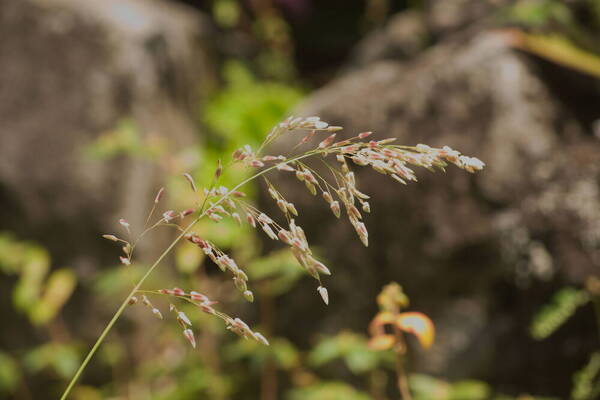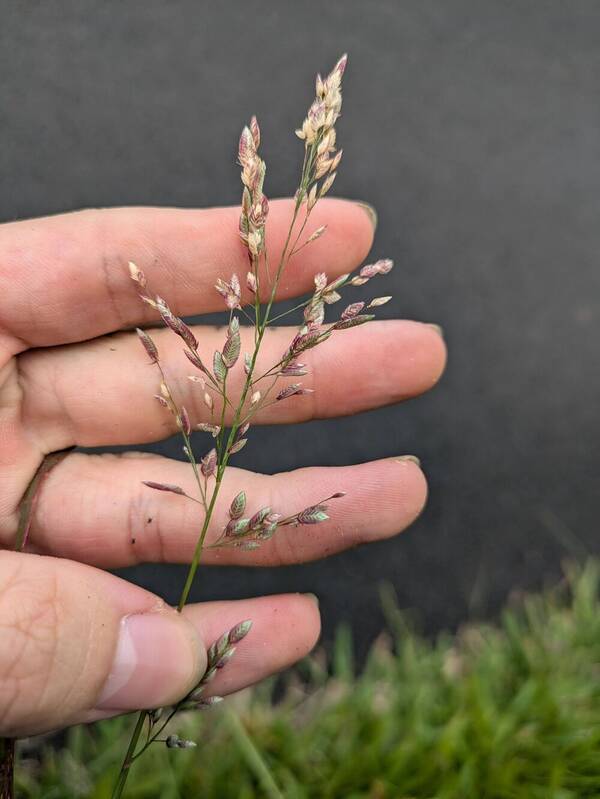Info
Subfamily: Chloridoideae
Genus etymology: Eragrostis = "love grass" [Greek] unclear origin, other etymologies such as "early grass" or "very grass" have also been speculated
Species etymology: unioloides = "resembling Uniola L." [Latin] Uniola is a grass genus with broad flattened florets
Photosynthetic type: C4 (warm season)
Nativity: naturalized - accidental
First recorded in Hawaiʻi: 1958
Map

Inflorescence














Plant


Spikelets






Description
Plants annual; tufted, without innovations, without glands. Culms 10-50 cm, erect, glabrous below the nodes. Leaves mostly basal; sheaths mostly glabrous, apices pilose, hairs 0.4-3 mm; ligules 0.1-0.2 mm, ciliate; blades (1.8)5-12 cm long, 2-6 mm wide, flat to involute, abaxial surfaces glabrous, adaxial surfaces scabridulous and glabrous or sparsely hairy, hairs appressed. Panicles 6-15 cm long, 0.5-7 cm wide, ovate, open to contracted; primary branches 0.2-5 cm, appressed or diverging up to 70° from the rachises, glabrous; pulvini glabrous; pedicels 2-8 mm, glabrous. Spikelets 4-8(10) mm long, (1.6)2-4 mm wide, ovate-lanceolate, loosely imbricate, straw-colored to purplish, with 12-42 florets; disarticulation acropetal, paleas not persistent, rachillas persistent. Glumes ovate-lanceolate to lanceolate, hyaline to membranous; lower glumes 1-1.8 mm; upper glumes 1-2.2 mm; lemmas 1.5-1.9 mm, broadly ovate, membranous, lateral veins raised, apices obtuse to acute; paleas 1.4-1.9 mm, hyaline, keels scabridulous, apices acute to obtuse; anthers 2, 0.2-0.4 mm, purplish. Caryopses 0.6-0.9 mm, ellipsoid, laterally compressed, not grooved, smooth, light brown. 2n = 20, ca. 30.
(Description source: Barkworth, M.E., Capels, K.M., Long, S. & Piep, M.B. (eds.) 2003. Flora of North America, north of Mexico. Volume 25. Magnoliophyta: Commelinidae (in part): Poaceae, Part 2. Oxford University Press, New York. 783 pp. http://floranorthamerica.org/Eragrostis_unioloides )